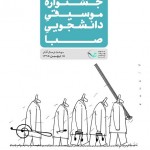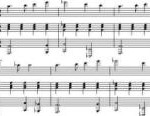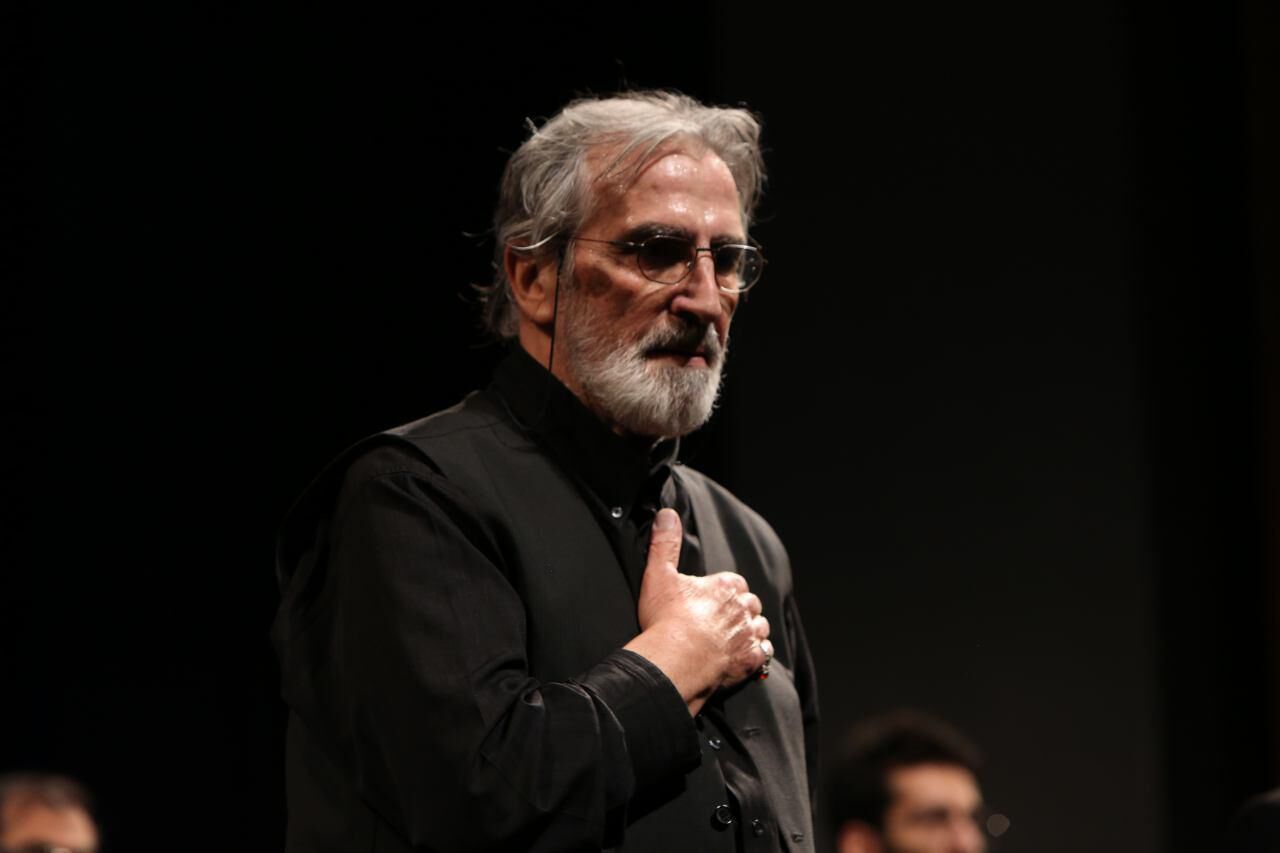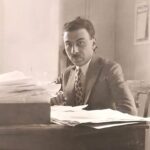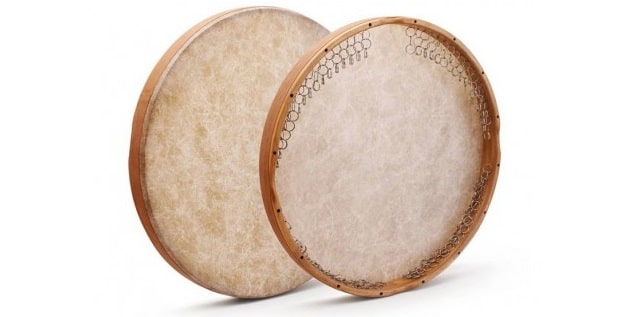
Researcher:
Mohammad Tarighat
Translator:
Fatemeh Alimohammadi
Daf Structure
The Structure of Daf in different cities of Iran has a great variety in terms of dimensions, components and even appearance; some of which are as follows:
– Square Daf, on which the skin was stretched either on one or both sides, with strings installed inside it and hazelnut-shaped bells were placed inside or outside the frame.
– Two-sided circular and two-sided square Daf on which the skin was stretched on both sides and the rings were installed inside or outside the frame.
– Octagonal Daf or “Dast koub” that had skin on one side and a number of bells inside the frame.
– Dodecagonal Daf on which the skin was stretched on one side and there were a few Malileh inside the frame and used a string to hold Daf while playing.
– Arabaneh, the use of this circular Daf is common in Yazd. Inside of this Daf, hazelnut-shaped bells were used instead of Malileh.
The structure and components of Dafs with natural skin in the Kurdistan region are:
1. Arch, frame, “Gharbali”;
2. Avazeh of Daf;
3. Thumb index;
4. Stud or tack;
5. Ring, chain, ” Malileh”,”Jalajal *”, “Khash khasheh or Rakht;
6. Hook;
7. Skin or leaf;
8. Leather or tarpaulin straps.
Dafs are evaluated for wood and skin (proper tanning, age-old, one-handed thickness, no white spots and color uniformity), distance of ring from skin, distance of ring from next ring, end cut of arch and connection to the skin, circular shape of the arch, Avazeh of Daf, the width of the arch, the correct cut of thumb index, the appropriate weight, and etc. Which ultimately leads to well-built and pleasant sound production.
Arch: In Kurdish, the arch of Daf is called “Chameh”, “Kama”, “Kamar” and “Kavaneh”. Behzad Naqib Sardasht wrote in his book named “Kurdish Music Organology “: Daf arch is made of walnut, plane tree, quince, and willow wood. The thickness of arch is about one to two centimeters, its width varies from five to ten centimeters and the diameter of Daf varies from 48 to 70 centimeters” (Naqib Sardasht, 2007: 295).
Arch is a wooden ring, made of grape wood and a Salicaceae such as: poplar, red willow, and etc. Diameter of arch can be between 50 and 60, its height is between five and six and a half, and a part that studs are on it should be between one and a half to two and two tenths of a centimeter (Mogharab Samadi, 2009: 77-78). In addition to the mentioned woods, Ali Asghar Nasrollahpour also mentions walnut, orange, and fig wood for the material of arch and he points out Daf circle diameter between 41 and 54 (Nasrollahpour, 2000: 73). Khaktinat also mentions wood of walnut trees, grape, ash** (Van, Benav, Benavch), quince, orange, and red willow (Khaktinat, 2005: 58).
Heidar Mohammadi – Daf maker – says: “The wooden body of the frame is made of wood of trees, such as: willow, in form of one layer; plane, grape, orange, and walnut in two layers and ash, maple, and berry in three layers; with a width between five to five and seven and in some cases up to seven centimeters and a length of two meters when it is circular, its diameter is about 53 to 57, which is common up to 60 cm; of course, usually for children and adolescents are made with smaller dimensions and less than 50 cm in diameter. The thickness of single-layer arch and bilayer varies between one and eight to two centimeters. The Avazeh of Daf also starts from the middle of the frame and gradually decreases to a thickness of two and a half to three millimeters” (Mohammadi, 1399).
______
* chime
** Fraxinus excelsior
